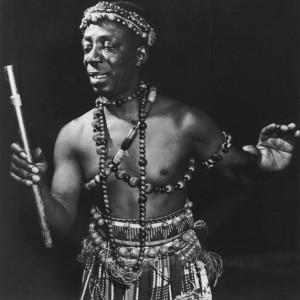Kykunkor is an opera created and produced by Asadata Dafora. The show first came out in New York City in 1934 when Asadata Dafora was forty-five years of age. Many critics were extremely enticed and wildly impressed by the performance. It incorporated elaborate music, vocals, and dance.
The plot of the show was rich with a vivid storyline. The show depicts the courtship and marriage of an African American couple, which was monumental at the time. The show was subtitled The Witch Woman, because a curse is placed on the couple and then attempted to be removed.
The show did pretty well with critics. Aurther Todd wrote Kykunkor was “one of the most intoxicating performances I’ve ever witnessed.” Many critics of were incredibly biased because of racial issues of the time period, but this does not deter the show from being a success. Despite the biased lingering racial stereotypes of some of the critics, Kykunkor managed to gain positive feedback from even some of the toughest critics.
For example, Lincoln Kirkstein was a bit biased towards African Americans. He even says, “Back stage after the performance must be a tricky place for a white man to navigate.” This statement clearly displays the divisions between blacks and whites at the time. Although he was less captivated with the African American women from Harlem, he was highly impressed with the dancing of the native African male dancers.
Kykunkor was not just an outstanding performance. It was also a way to show off an incredibly vibrant culture. Dance companies from Senegal, Kenya, and Ghana today still have shows like this that display a great deal of their culture through performance. So, it is safe to say this show had a great impact on not only America, but also gave places in Africa an idea of how to incorporate their rich culture into dance.


Really interesting article. Very cool that he choreographed his own dances! This blog has a great analysis of Dafora’s importance and how he influenced the African dance scene.